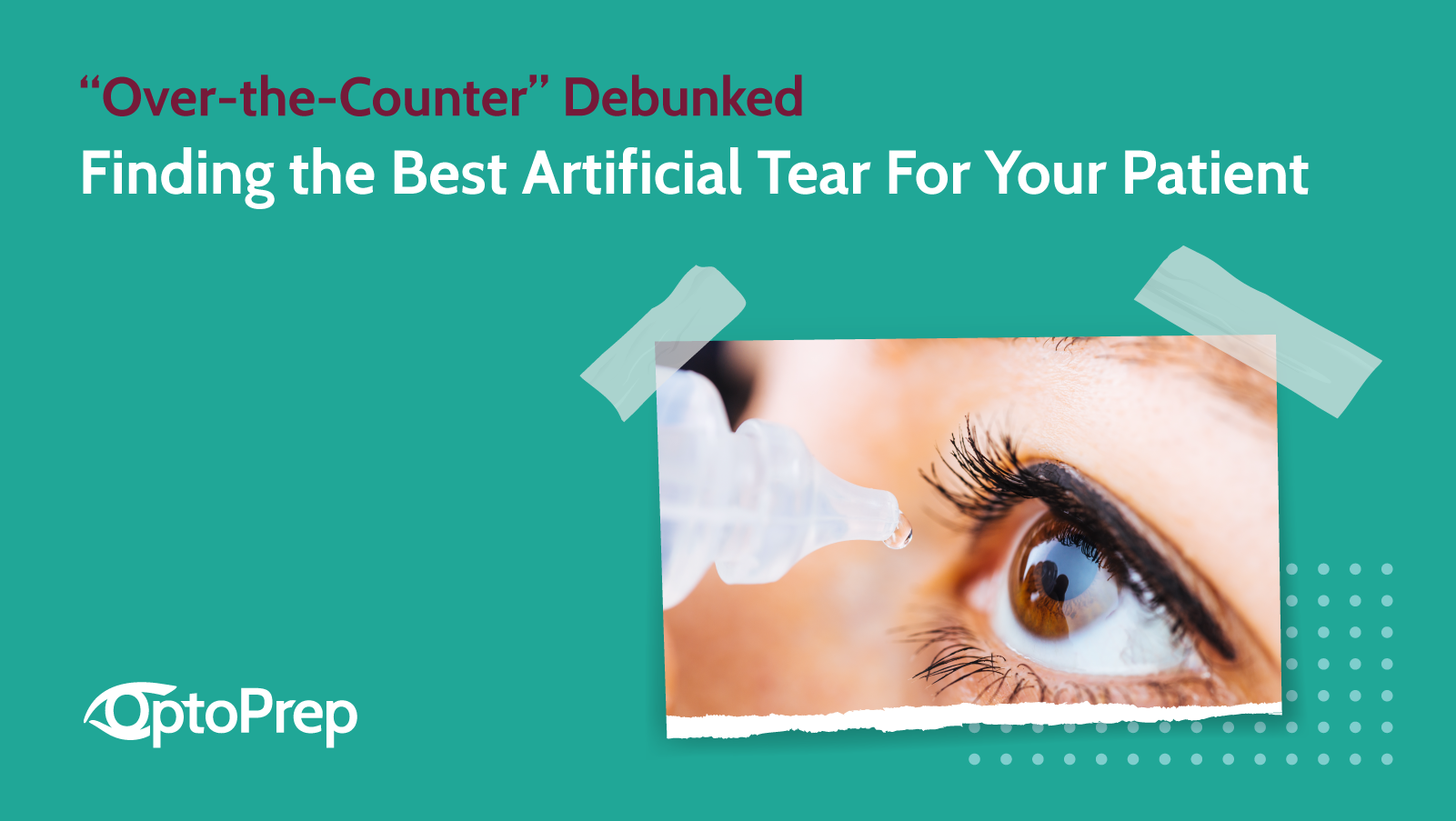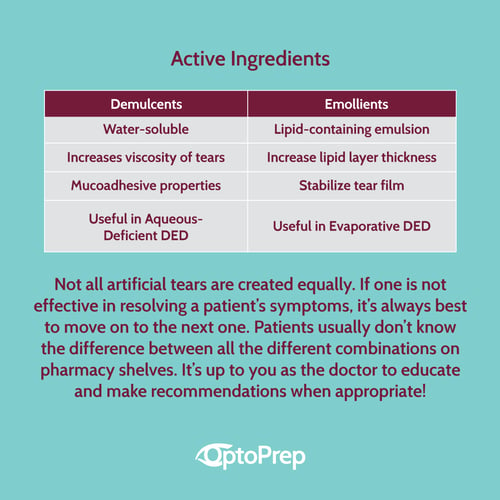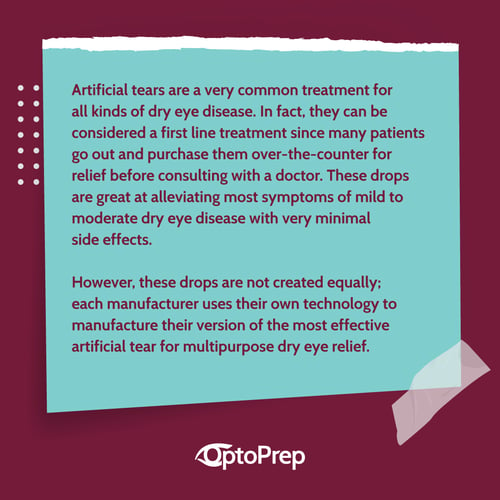
 Artificial tears are a very common treatment for all kinds of dry eye disease. In fact, they can be considered a first line treatment since many patients go out and purchase them over-the-counter for relief before consulting with a doctor. These drops are great at alleviating most symptoms of mild to moderate dry eye disease with very minimal side effects.
Artificial tears are a very common treatment for all kinds of dry eye disease. In fact, they can be considered a first line treatment since many patients go out and purchase them over-the-counter for relief before consulting with a doctor. These drops are great at alleviating most symptoms of mild to moderate dry eye disease with very minimal side effects.
However, these drops are not created equally: each manufacturer uses their own technology to manufacture their version of the most effective artificial tear for multipurpose dry eye relief. Here we will compare common ingredients, including preservatives, to help you differentiate which artificial tear is right for your patients.
All of the ingredients used in the manufacturing of artificial tears should be considered when treating a patient’s dry eye disease (DED). Not every dry eye is the same, and not every artificial tear is made the same. Some active ingredients may be useful for aqueous deficient dry eye, others may be useful for evaporative dry eye. Also, some preservatives can impact the treatment process.
First let’s compare the two most common active ingredients.
Active Ingredients
| Demulcents |
Emollients |
| Water-soluble |
Lipid-containing emulsion |
| Increases viscosity of tears |
Increase lipid layer thickness |
| Mucoadhesive properties |
Stabilize tear film |
| Useful in Aqueous-Deficient DED |
Useful in Evaporative DED |
Demulcents are involved in overall lubrication of the ocular surface. Artificial tears containing demulcents focus on lubricating the surface of the entire cornea for relief of symptoms. The demulcents are also designed to hang on to the corneal surface for longer, in order to maintain relief for longer periods of time. Therefore, they are sometimes designed to be more viscous and gel-like. The more viscous the demulcent, the higher chance of causing blur immediately after instillation. The most commonly used demulcents are carboxymethylcellulose and hydroxypropyl methylcellulose.

Emollients focus on bringing lipids (that are usually lacking in evaporative dry eye) to the ocular surface. With supplementation of the lipid layer, they stabilize the tear film. Due to the nature of the oil, emollients are formulated into emulsions or ointments. Therefore, most artificial tears containing emollients should be shaken before instillation.
Preservatives
Preservatives are important in maintaining the integrity of the medication after it has been opened for use. However, some of these preservatives can be toxic in large quantities. Though trace amounts of preservatives are used in artificial tear formulations, they still should be used with caution when patients need to instill drops multiple times a day. The two most commonly used preservatives in ophthalmic medications are benzalkonium chloride (BAK) and polyquaternium (Polyquad). Prolonged use of BAK-containing drops has been linked to increased corneal staining. For this reason, there are plenty of preservative-free formulations available when corneal toxicity is of concern.

So, what do I recommend?
When recommending artificial tears, there are a few factors to consider: How often will the patient be using the drop? When do they feel their symptoms the most? Do they wear contact lenses? What kind of dry eye do they have? These are just some of the questions you should be answering when picking the right eye drop.
In a patient with evaporative dry eye, an artificial tear with an emollient will be helpful in stabilizing the tear film and increasing lipid layer thickness. In a patient with aqueous deficient dry eye, you can start with an eye drop that contains a demulcent. However, always remember that oftentimes you must also prescribe additional forms of treatment for maximal relief.
Not all artificial tears are created equally. If one is not effective in resolving a patient’s symptoms, it’s always best to move on to the next one. Patients usually don’t know the difference between all the different combinations on pharmacy shelves. It’s up to you as the doctor to educate and make recommendations when appropriate!
~ Dr. Amadian
